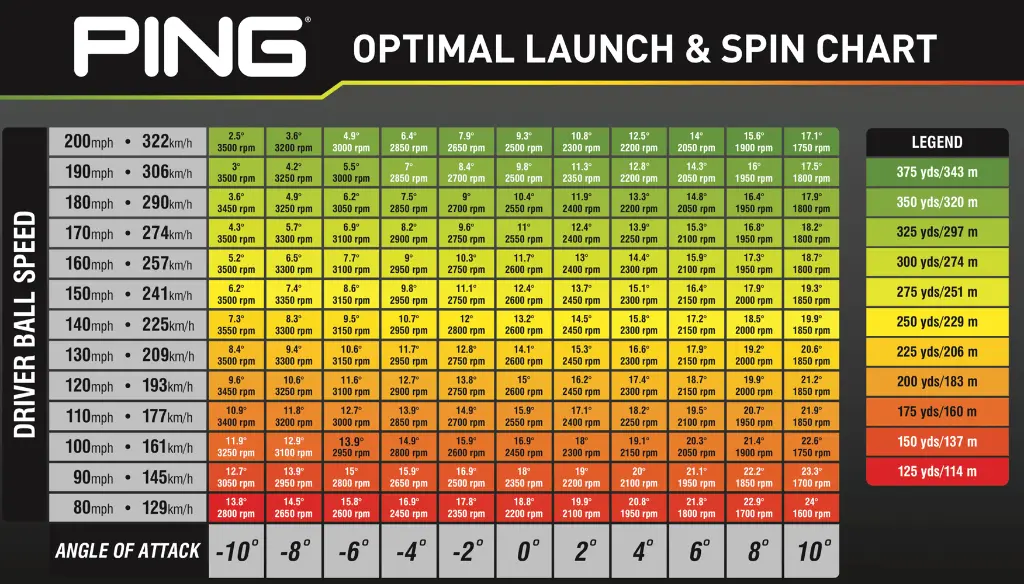If you’re spending hours trying to perfect your swing mechanics but still struggling to add distance, it might be time to look beyond your golf clubs and into your gym routine. Golf workouts are essential for increasing swing speed, improving mobility, and preventing injuries. In this article, we’ll cover the top 3 golf workouts to help you add distance and play better, longer.
What Actually Impacts Your Distance?
When you hear a player hit a 300+ yard drive, it’s not just raw strength or fancy clubs. Distance is largely driven by two key elements: clubhead speed and smash factor. But no matter how efficient your mechanics are, golf workouts play a critical role in generating the strength and speed needed for real power.
Clubhead Speed
This refers to how fast the club is moving when it strikes the ball. The faster you can swing the club — while maintaining control — the more energy is transferred to the ball. More energy = more distance.
To generate higher clubhead speeds, your body must move explosively. This is where fast-twitch muscle fibers come into play. These fibers produce quick, forceful contractions needed for explosive movements — like sprinting or swinging a driver at high velocity.
And yes, you can train your body to activate more of them. This means your workouts should include power-based movements that mirror the golf swing’s dynamics.
Specific golf workouts focused on speed and explosiveness help train your body to move with more force.
Smash Factor
As PING Golf explains, smash factor is a measure of efficiency, calculated as:
Smash Factor = Ball Speed / Clubhead Speed
A high smash factor means you’re transferring energy efficiently into the ball. While amateurs may obsess over increasing club speed, poor contact can ruin potential gains. Tour players might swing at the same speed as a high-level amateur, but the ball goes 30–40 yards farther — all thanks to clean, centered contact and an optimized launch.
It’s the combination of high club speed and a strong smash factor that leads to longer, more consistent shots.
This chart maps out carry distance potential based on your clubhead speed, assuming optimal launch conditions. It helps golfers (and coaches) understand whether they’re maximizing distance or leaving yards on the table.

Explained:
| Metric | Definition |
|---|---|
| Clubhead Speed (mph) | The speed of the clubhead at impact. Typically ranges from 60 to 130 mph. |
| Ball Speed (mph) | The velocity of the ball after impact. Influenced by how efficiently you strike the ball (smash factor). |
| Launch Angle (°) | The initial angle the ball leaves the clubface. Too low or high reduces carry distance. |
| Spin Rate (rpm) | The backward spin rate of the ball. Varies by speed; too much or too little kills distance. |
| Carry Distance (yds) | The distance the ball travels in the air, assuming optimal launch conditions. |
Why Fitness (and Flexibility) Are the Real Game-Changers
You can’t build speed or efficient contact without a solid base. That base comes from your body’s physical strength, mobility, and stability.
A powerful, injury-free swing draws strength from the legs, control and torque from the core, and precision from the arms and shoulders. But there’s a catch — if any part of the body is tight, restricted, or unstable, the entire sequence breaks down.
That’s why flexibility is the hinge that holds everything together. Especially as we age, joint mobility, muscle elasticity, and rotational range tend to decline — unless we actively maintain them. For golfers, that means reduced swing speed, higher injury risk, and shorter playing careers.
Golf fitness isn’t just for pros — it’s for anyone who wants to hit it farther, feel better, and stay in the game longer.
Our Favorite Top 3 Golf-Specific Workouts:
Whether you’re a weekend golfer or grinding for a low handicap, these three workouts are designed to train the exact movement patterns and muscle groups needed for power, stability, and mobility.
These top golf workouts target mobility, strength, and power for real on-course results.
1. Wall-Supported Thoracic Rotation with Single-Leg RDL
Coach: The Fitness Maverick (Tinsley Performance)
Why It Works:
This movement is a two-in-one powerhouse for golfers. It trains:
- Thoracic spine mobility (upper back rotation)
- Posterior chain stability (glutes, hamstrings, spinal erectors)
- Balance and proprioception on one leg
In golf, the ability to rotate the upper body independently from the hips is critical for generating torque — that coiled feeling at the top of the backswing. This exercise mimics that rotational movement while building balance and control on a single leg, just like your trail leg during the swing.
Training Plan:
Frequency: 2–3x per week
Goal: Core stability & rotation control
| Exercise | Sets x Reps | Notes |
|---|---|---|
| Rotational Core Work | 3 sets of 8–10/side | Focus on controlled breathing, long spine, and deliberate rotation |
2. Glute Stability Drill (Scottie Scheffler’s Favorite)
Featured In: A viral breakdown of World #1 Scottie Scheffler’s training routine by golfforever.com
Why It Works:
Scottie Scheffler’s swing is known for its unique footwork — especially the way he dynamically shifts weight and uses the ground for power. That footwork and rotational control is possible because of strong, stable glutes.
This glute activation drill focuses on:
- Pelvic control
- Lower body stability
- Improved ground reaction force, which is how golfers “push off” the ground to generate speed
It’s simple but incredibly effective, especially if your glutes tend to be underactive from too much sitting (which, let’s face it, is most of us).
Training Plan:
Frequency: 3x per week
Goal: Glute warm-up or standalone session
| Exercise | Sets x Reps | Notes |
|---|---|---|
| Glute-focused Movements | 3 sets of 12–15/leg | Add a resistance band for extra intensity |
3. Strength Training + Mobility from DRVN Golf & Fitness
Video Highlights:
- Resistance Band Dynamic Power [2:50]
- Split Stance Rotation [5:05]
- Rotational Kettlebell Swing [6:25]
Why It Works:
This workout pulls together everything a golfer needs:
- Strength for more powerful swings
- Stability in your base
- Mobility in your rotational joints
Split stance rotation build single-leg strength while mimicking the weight shift in your swing. Resistance bands train the nervous system for faster contractions — perfect for fast-twitch development. Meanwhile, mobility drills keep hips and shoulders loose and injury-free.
DRVN Golf’s workouts are designed specifically for golfers, and many tour players have adopted this style of training as their go-to.
An alternative to kettlebell type weights is the adjustable dumbbells from Core Home Fitness, these are good affordable options for a good home workout. Check out our blog here on these adjustable dumbbells:
Training Plan:
Grind 3: Full-Body Strength + Mobility
Frequency: 2–3x per week
Goal: Balanced strength and joint health
| Component | Sets x Reps/Time | Notes |
|---|---|---|
| Resistance Band Power Drills | 3 sets of 8–10 reps | Explosive, full-body engagement |
| Kettlebell Split Squats | 3 sets of 6–8 reps per leg | Focus on depth and balance |
| Hip & Shoulder Mobility Work | 5–10 minutes | Prioritize movement quality over speed |
Golf Longevity = Mobility + Strength + Smart Training
As we get older, we naturally lose muscle elasticity and joint mobility. But that doesn’t have to mean shorter drives or fewer rounds played. By incorporating just these three workouts into your weekly routine, you’ll not only see a boost in distance — you’ll protect your joints, improve your posture, and extend your time on the course.
Bonus: Injury Prevention
These workouts don’t just make you stronger; they reduce your injury risk. When your body is balanced, mobile, and stable, you can handle the rotational demands of the golf swing without compensating or straining the wrong muscles. That’s the secret to consistent play and staying pain-free.
Final Thoughts: Train Like a Golfer, Play Like a Champion
Improving your swing doesn’t always mean more range time — sometimes, it means more time in the gym doing the right things. Whether you’re chasing a personal best or just want to enjoy the game for decades, golf-specific fitness is your ticket to better performance, more distance, and long-term health.
Train smart. Swing fast. Stay flexible. And keep hitting bombs.
How useful was this post?
Click on a star to rate it!
Average rating 5 / 5. Vote count: 4
No votes so far! Be the first to rate this post.




